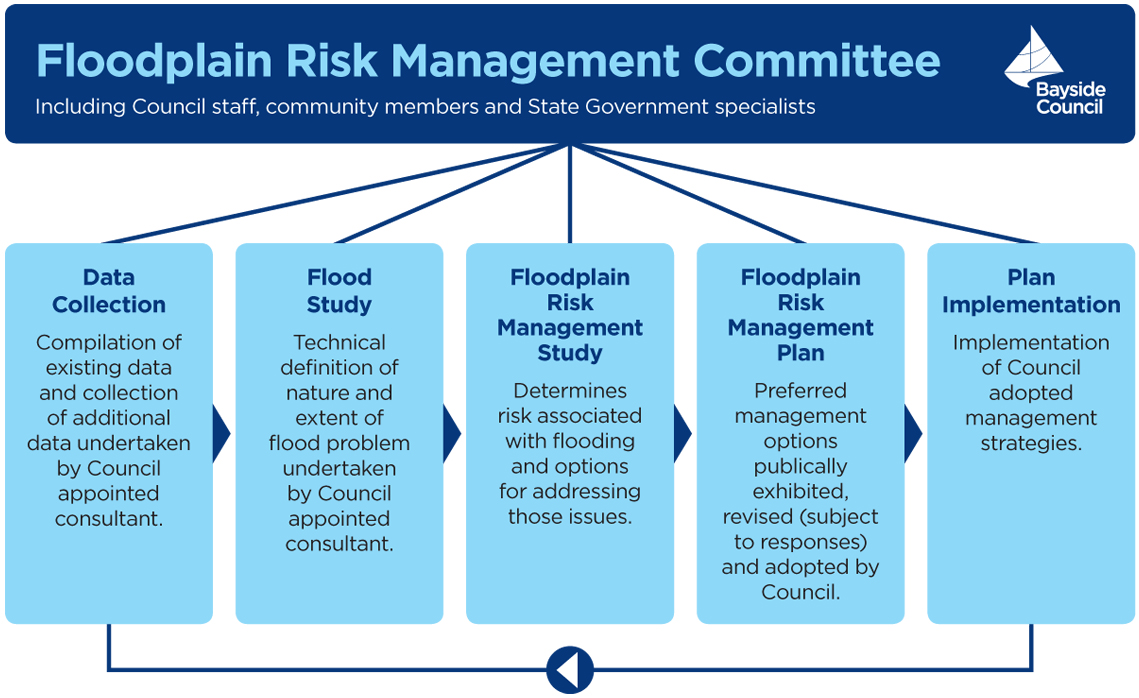Council has a robust and effective process for managing flooding.
Council uses Floodplain Risk Management Studies and Plans to outline flood mitigation measures and to reduce the risk of flooding. Under the NSW Government's Flood Prone Land Policy, Council is required to manage flooding issues and put plans into place to safeguard flood-prone areas.
The Floodplain Risk Management Manual (2023) guides Council in the development and implementation of local floodplain risk management plans to produce robust and effective floodplain risk management outcomes.


